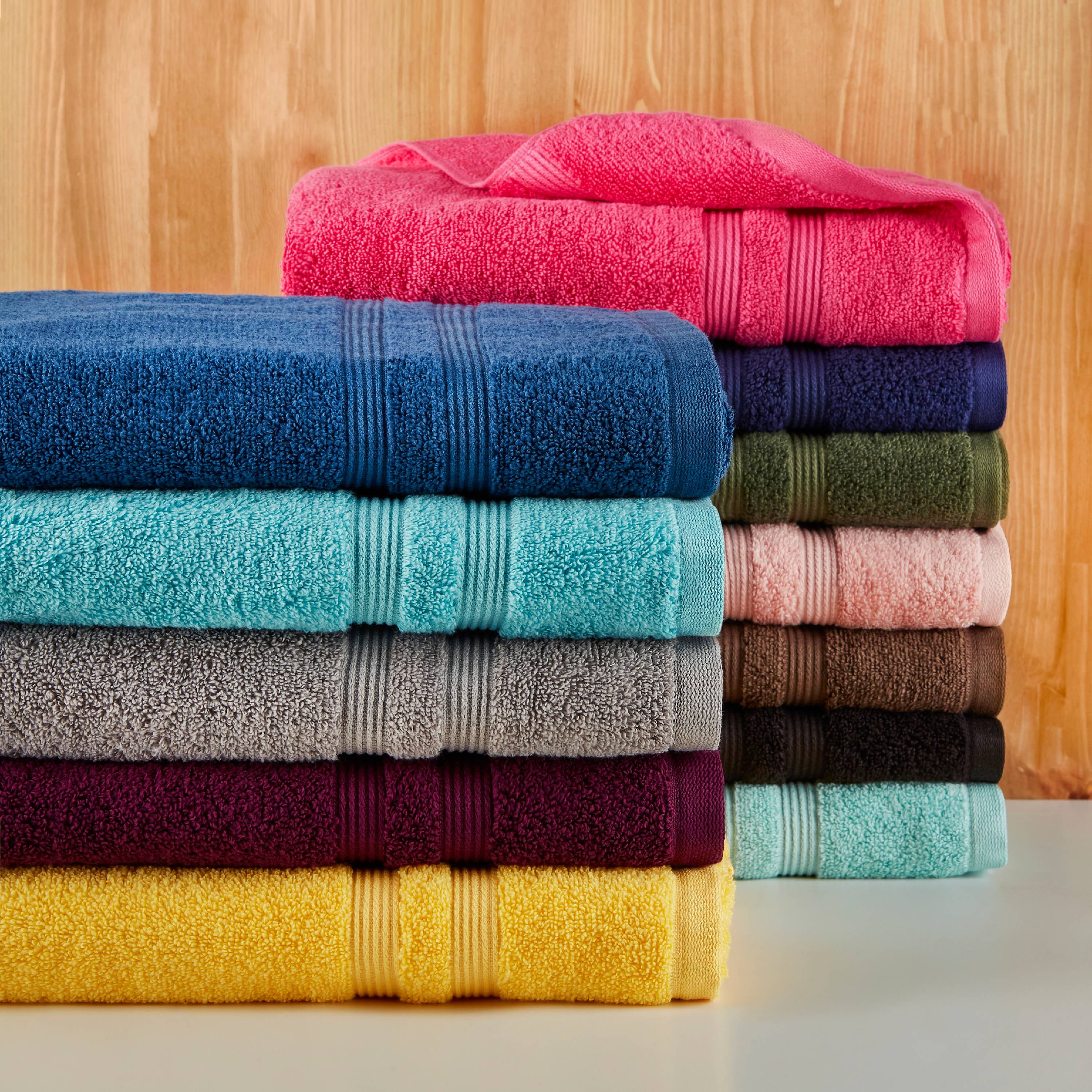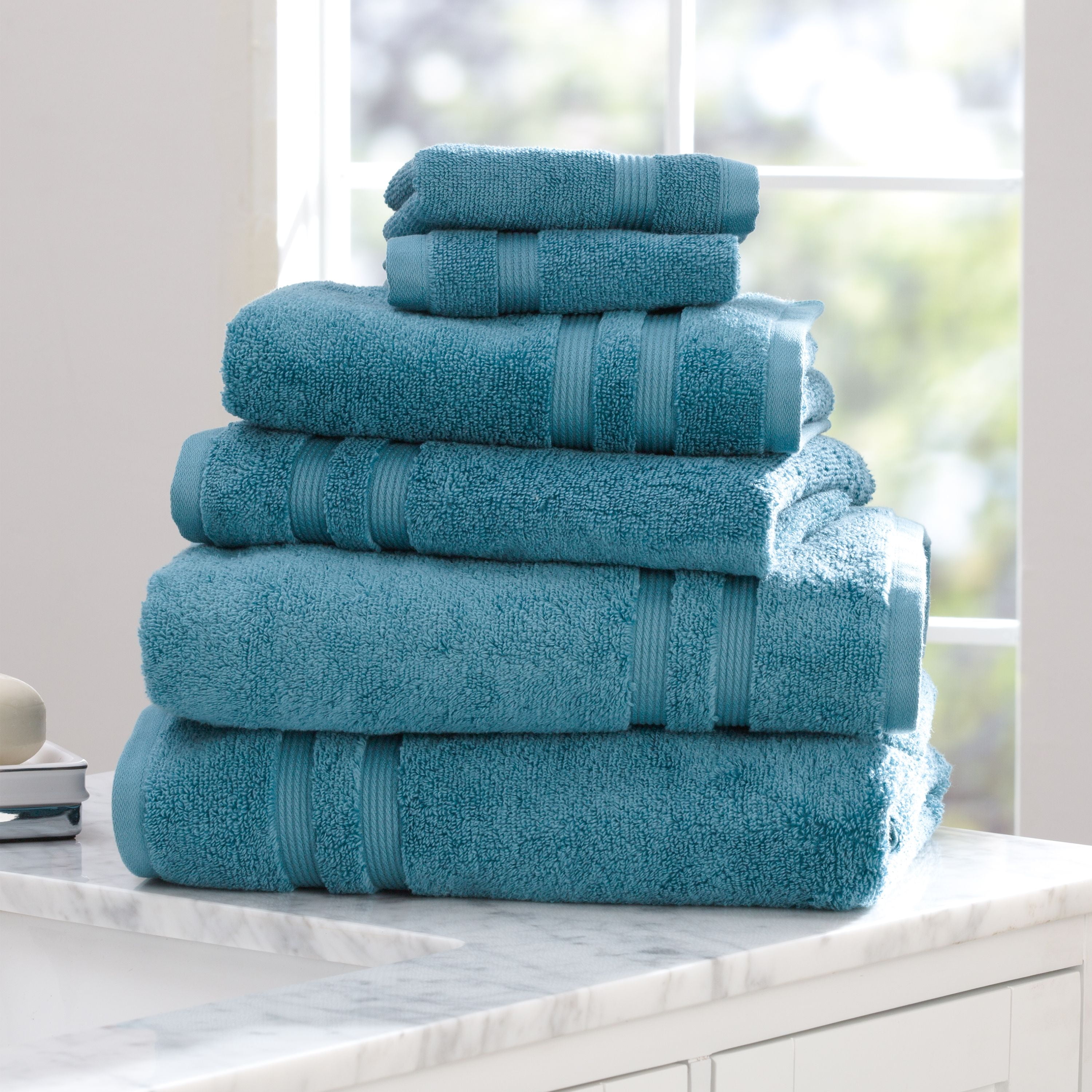Bathroom Towel & Bath Mat Materials

Choosing the right materials for your bathroom towels and bath mats is crucial for comfort, absorbency, and durability. Each material has its unique characteristics, advantages, and drawbacks, which can significantly impact your overall bathroom experience. Understanding the pros and cons of each material will help you make an informed decision that best suits your needs and preferences.
Comparison of Bathroom Towel & Bath Mat Materials
The most common materials used for bathroom towels and bath mats are cotton, microfiber, bamboo, and linen. Each material offers unique benefits and drawbacks, impacting their absorbency, durability, softness, and maintenance requirements.
- Cotton: Cotton is a natural fiber known for its softness, absorbency, and breathability. It is also relatively inexpensive and readily available. However, cotton towels can be prone to shrinking and wrinkling, and they may require more frequent washing. Cotton towels are also susceptible to mildew and mold growth in humid environments.
- Microfiber: Microfiber is a synthetic material made from polyester and polyamide. It is incredibly absorbent, quick-drying, and durable. Microfiber towels are also lightweight and compact, making them ideal for travel. However, microfiber can feel less soft than cotton and may not be as breathable. Additionally, microfiber towels can sometimes shed fibers, especially during the first few washes.
- Bamboo: Bamboo is a natural fiber known for its softness, absorbency, and antimicrobial properties. It is also a sustainable and renewable resource. Bamboo towels are generally more expensive than cotton towels, but they are often softer and more absorbent. Bamboo towels are also known to be hypoallergenic and gentle on sensitive skin. However, bamboo towels can be more prone to wrinkling than cotton towels and may require more careful washing.
- Linen: Linen is a natural fiber made from flax plants. It is known for its durability, absorbency, and breathability. Linen towels are also naturally antibacterial and hypoallergenic. However, linen towels can be more expensive than cotton towels and may feel rougher to the touch. Linen towels can also be prone to wrinkling and may require more frequent washing.
Maintenance and Drying Time
The maintenance requirements and drying time for bathroom towels and bath mats vary depending on the material.
- Cotton: Cotton towels can be washed in a washing machine with regular detergent and dried in a dryer on a low heat setting. However, it is recommended to air-dry cotton towels whenever possible to prevent shrinking and damage.
- Microfiber: Microfiber towels can be washed in a washing machine with a mild detergent and dried in a dryer on a low heat setting. It is important to avoid using fabric softeners on microfiber towels as they can reduce their absorbency. Microfiber towels dry quickly, making them ideal for frequent use.
- Bamboo: Bamboo towels should be washed in a washing machine with a mild detergent and dried in a dryer on a low heat setting. Avoid using bleach or fabric softeners on bamboo towels. Bamboo towels are known for their quick drying time.
- Linen: Linen towels can be washed in a washing machine with a mild detergent and dried in a dryer on a low heat setting. It is recommended to air-dry linen towels whenever possible to prevent shrinking and wrinkling. Linen towels are known for their quick drying time.
Environmental Impact
The environmental impact of bathroom towels and bath mats depends on the material used and the manufacturing process.
- Cotton: Cotton is a natural fiber that is relatively easy to grow and process. However, cotton cultivation requires significant amounts of water and pesticides, which can have negative impacts on the environment. Additionally, cotton production can contribute to soil erosion and deforestation.
- Microfiber: Microfiber is a synthetic material made from petroleum-based products. The production of microfiber can contribute to air and water pollution. Additionally, microfiber fibers can end up in waterways and oceans, where they can harm marine life.
- Bamboo: Bamboo is a fast-growing and renewable resource that requires less water and pesticides than cotton. However, bamboo production can still have negative impacts on the environment if it is not managed sustainably.
- Linen: Linen is a natural fiber that is grown without the use of pesticides or herbicides. However, linen production requires significant amounts of water and energy.
Comparison Table
The following table summarizes the key features of each material, including its absorbency rating, durability score, and softness level.
| Material | Absorbency Rating | Durability Score | Softness Level |
|---|---|---|---|
| Cotton | High | Medium | High |
| Microfiber | Very High | High | Medium |
| Bamboo | Very High | Medium | High |
| Linen | High | High | Medium |
Bathroom Towel & Bath Mat Sizes and Styles

Bathroom towels and bath mats come in a variety of sizes and styles to suit different needs and preferences. Understanding the different sizes and styles available can help you choose the right options for your bathroom.
Bathroom Towel Sizes
The size of a bathroom towel is a significant factor to consider as it directly impacts its functionality and suitability for specific purposes. Here’s a breakdown of common bathroom towel sizes and their typical uses:
- Hand Towels: These are the smallest towels, typically measuring 16″ x 28″ or 18″ x 30″. They are primarily designed for drying hands after washing them.
- Washcloths: Washcloths are even smaller than hand towels, measuring approximately 12″ x 12″. They are primarily used for washing the face and body.
- Bath Towels: Bath towels are larger than hand towels and are used for drying the entire body after showering or bathing. They typically measure 30″ x 54″ or 30″ x 58″.
- Bath Sheets: Bath sheets are the largest towels, typically measuring 40″ x 70″ or 40″ x 80″. They are often used for wrapping the entire body after bathing or showering.
Bathroom Towel Styles
Bathroom towels are available in various styles to complement different bathroom aesthetics and personal preferences. Here are some common styles:
- Traditional: Traditional towels typically feature classic designs with solid colors or simple patterns. They often have a woven texture and a soft, absorbent feel. Examples include plain white towels with a subtle border or towels with a simple geometric pattern.
- Modern: Modern towels often feature contemporary designs with bold colors, geometric patterns, or abstract designs. They may have a smooth or textured surface and a luxurious feel. Examples include towels with bold stripes, geometric patterns, or abstract designs in vibrant colors.
- Decorative: Decorative towels often feature intricate embroidery, lace details, or other embellishments. They can add a touch of elegance and sophistication to a bathroom. Examples include towels with embroidered floral patterns, lace trim, or beaded details.
Bath Mat Sizes
Bath mats are available in various sizes to fit different bathroom floors and shower areas. The most common sizes are:
- Small: Small bath mats are typically 17″ x 24″ and are suitable for small bathrooms or for placing in front of a sink.
- Medium: Medium bath mats are approximately 20″ x 30″ and are suitable for standard-sized bathrooms.
- Large: Large bath mats are typically 24″ x 36″ and are suitable for larger bathrooms or for placing in front of a shower or bathtub.
Bath Mat Styles, Bathroom towels and bath mats
Bath mats are available in a wide range of styles to complement the overall bathroom decor. Here are some common styles:
- Solid Color: Solid-color bath mats are simple and versatile, and they can be easily matched to any bathroom decor.
- Patterned: Patterned bath mats can add a touch of personality and style to a bathroom. They are available in a variety of patterns, from geometric designs to floral prints.
- Textured: Textured bath mats provide a more luxurious feel and can add a touch of visual interest to a bathroom. They are available in a variety of textures, from soft and plush to rough and textured.
Bathroom Towel & Bath Mat Care and Maintenance: Bathroom Towels And Bath Mats

Proper care and maintenance are essential to prolong the life of your bathroom towels and bath mats, ensuring they remain soft, absorbent, and hygienic. By following these simple steps, you can keep your bathroom linens looking and feeling their best.
Washing and Drying Bathroom Towels and Bath Mats
Regular washing is crucial for maintaining the cleanliness and freshness of your bathroom towels and bath mats. It helps to remove dirt, bacteria, and other debris that can accumulate over time.
- Wash Regularly: Wash towels and bath mats after each use, or at least once a week. More frequent washing is recommended for individuals with sensitive skin or those who use their towels frequently.
- Use the Correct Water Temperature: Wash towels and bath mats in hot water (140°F or 60°C) to effectively kill bacteria and remove dirt.
- Choose the Right Detergent: Opt for a mild detergent designed for delicate fabrics. Harsh detergents can strip towels of their natural oils, making them feel rough and less absorbent.
- Avoid Fabric Softener: Fabric softeners can leave a residue on towels, reducing their absorbency.
- Dry Thoroughly: Tumble dry towels and bath mats on a low heat setting until completely dry. Avoid overcrowding the dryer to ensure proper air circulation.
- Line Dry: Alternatively, you can line dry towels and bath mats in a well-ventilated area, out of direct sunlight.
Preventing Bacteria and Mildew Growth
Bacteria and mildew can thrive in damp environments, making it essential to prevent their growth on bathroom towels and bath mats.
- Air Dry Thoroughly: Ensure towels and bath mats are completely dry before storing them.
- Avoid Overcrowding: Do not store damp towels or bath mats in a pile, as this can trap moisture and promote bacteria growth.
- Wash Regularly: Regular washing helps to eliminate bacteria and mildew.
- Sunlight Exposure: Exposing towels and bath mats to sunlight can help kill bacteria and prevent mildew growth.
- Vinegar Rinse: Adding a cup of white vinegar to the washing machine during the rinse cycle can help neutralize odors and prevent mildew.
